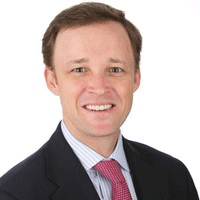Checking Up on Medicare Part B
| BY GENE HARDY |
| Checking up on Medicare Part B Are you sure your processes are in order? What sort of help is available? Read on… |
| Regardless of whether you bill Medicare Part B for your enteral feeding, urologic, ostomy, trach, and wound care supplies, or have an outside company submit claims for these through its provider number, it pays to keep checking up on and updating your Part B billing arrangement. Continually striving to improve your staff’s understanding of the program will reduce both your cost and the risk of billing Part B, Medicaid, and private pay inappropriately. When nursing homes first began obtaining a Medicare Part B provider number, claims were sent to companies designated as Carriers. Carriers then transitioned to Durable Medical Equipment Regional Carriers (DMERCs) during the ’90s. This year, we transition to the new designation, DME Medicare Administrative Contractors (MACs). As of July 1, two of the four DME MAC regions have transitioned, and two are pending. This change will affect some nursing homes and chains more than others, depending on your Part B arrangement, particularly in testing the claims submission process. Nursing homes that bill Part B directly, as well as third-party providers and contract billing companies, will have to test their transmission systems and formats. Nursing homes have numerous options for Part B’covered items. One option is for the nursing home to apply for its own provider number, buy the products, and submit claims directly. A variation of this option is to have an outside firm, for a fee, handle the processing of the claims on the facility’s behalf and submit them using the facility provider number. The last option is to give an outside company the entire responsibility of providing the products and submitting claims through its own provider number. Each option poses several considerations. For instance, you may want to bill enteral feeding through your facility provider number and let an outside company handle urologic, ostomy, trach, and wound care supplies through its provider number. This might occur if the facility believes that it better understands the product cost, reimbursement, and claims processes of enteral feeding than it does the other four categories. Whatever the option, the nursing home can improve its Part B program administration and reduce facility and patient costs by educating staff to better understand and monitor all aspects of the process. Structural Considerations Third-party companies may offer a wide variety of arrangements for you to consider, including a proposal for a “transitional” program. That is, they begin by billing through their provider number, but at some point in the future, you get a provider number and they sell you products and process and submit the claims through your new provider number. In each of these arrangements, the nursing home makes a decision for residents who have assigned their benefits. This decision should not be taken lightly. The annual cost of just one enteral feeding patient thought not to qualify or meet coverage criteria can reach thousands of dollars for the facility or private-pay family. Here are some steps to ensure a better understanding of the Part B program and any Part B company you may consider doing business with:
Since few, if any, clinical and financial software providers offer a Part B DMERC billing module, integrating any of the Part B arrangements I have discussed will take planning. If the outside company is sending product and billing through its number, how will you reconcile tracking its product to your billing systems, both electronic and manual? Many facilities address this by tracking product with bar codes. Also, your inventory and the Part B inventory may be stored together. Even when they’re not stored together, you should review all storage areas (central supply, med room, supply closets, carts, etc.) and identify staff members who have access to them. Realize that some staff, busy with a task, may pick up the nearest available product without thought to its billing considerations. Have ongoing discussions with the persons responsible for how Part B items are set up in your bar code software. Remember that Part B products should be tracked for Part A residents. Products billed to Part B for non’Part A patients should be tracked and monitored to ensure that they are not billed privately or included in cost reports to Medicaid. How you tweak the setup and update your bar code software is an important part of ensuring appropriate resident billing. Since census is normally not maintained in real time in your bar code software, examine closely how the interface of this with your primary clinical and financial software is accomplished. Simply setting the Part B allowable on each product and installing a month-end back feeding of census in your bar code software will not guarantee correct resident billing. How would your bar code tracking system handle this example? One patient has two wounds; one wound qualifies for Part B and the second does not, but the same products are used on both. If the patient was private pay and an outside company was sending in product and billing through its number, you would need to bill privately for the second wound’s dressings and other supplies. Certainly, you would not want to bill the private-pay patient for the Part B’covered dressings that the outside Part B company billed Medicare for. The point is, even with advances in computer software, there will always be a need for manual intervention with Part B tracking and reporting. If your facility has a Part B provider number, you probably understand the importance of continual staff training and updating on medical necessity and coverage criteria. If a third-party firm processes your claims or handles the program completely, make certain you understand its training policies and procedures. In fact, request that the firm respond in writing outlining how its employees are trained and kept abreast of policy changes to ensure that the Part B claims for your residents meet all regulatory guidelines. Ask the firm to identify policies and procedures it follows to ensure that no inappropriate cost is charged to Medicaid by you and no products that should be covered by Part B are charged to private-pay families. Remember, one patient who should qualify for enteral feeding, but because of a lack of staff training is thought not to qualify, can cost thousands of dollars each year. Checking up on your Part B program will pay for itself in ensuring appropriate patient billing. Gene Hardy is President of Ancillary Billing Consultants, Greensboro, North Carolina. He owned a Part B claims processing firm for more than 12 years. For further information, phone (336) 790-8922. To send your comments to the author and editors, e-mail hardy0706@nursinghomesmagazine.com. |
I Advance Senior Care is the industry-leading source for practical, in-depth, business-building, and resident care information for owners, executives, administrators, and directors of nursing at assisted living communities, skilled nursing facilities, post-acute facilities, and continuing care retirement communities. The I Advance Senior Care editorial team and industry experts provide market analysis, strategic direction, policy commentary, clinical best-practices, business management, and technology breakthroughs.
I Advance Senior Care is part of the Institute for the Advancement of Senior Care and published by Plain-English Health Care.
Related Articles
Topics: Articles , Finance , Medicare/Medicaid












